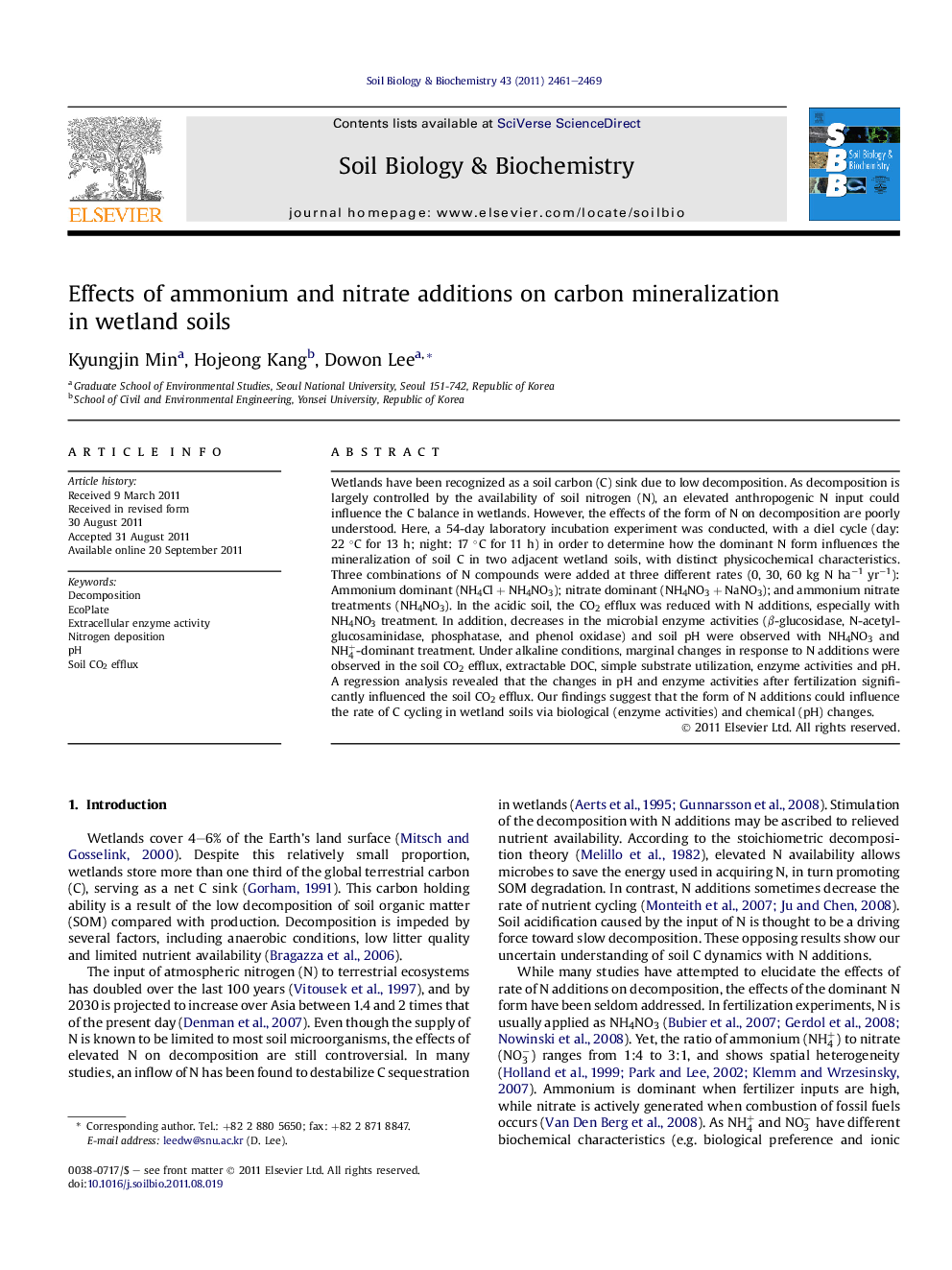| کد مقاله | کد نشریه | سال انتشار | مقاله انگلیسی | نسخه تمام متن |
|---|---|---|---|---|
| 2025171 | 1069984 | 2011 | 9 صفحه PDF | دانلود رایگان |

Wetlands have been recognized as a soil carbon (C) sink due to low decomposition. As decomposition is largely controlled by the availability of soil nitrogen (N), an elevated anthropogenic N input could influence the C balance in wetlands. However, the effects of the form of N on decomposition are poorly understood. Here, a 54-day laboratory incubation experiment was conducted, with a diel cycle (day: 22 °C for 13 h; night: 17 °C for 11 h) in order to determine how the dominant N form influences the mineralization of soil C in two adjacent wetland soils, with distinct physicochemical characteristics. Three combinations of N compounds were added at three different rates (0, 30, 60 kg N ha−1 yr−1): Ammonium dominant (NH4Cl + NH4NO3); nitrate dominant (NH4NO3 + NaNO3); and ammonium nitrate treatments (NH4NO3). In the acidic soil, the CO2 efflux was reduced with N additions, especially with NH4NO3 treatment. In addition, decreases in the microbial enzyme activities (β-glucosidase, N-acetyl-glucosaminidase, phosphatase, and phenol oxidase) and soil pH were observed with NH4NO3 and NH4+-dominant treatment. Under alkaline conditions, marginal changes in response to N additions were observed in the soil CO2 efflux, extractable DOC, simple substrate utilization, enzyme activities and pH. A regression analysis revealed that the changes in pH and enzyme activities after fertilization significantly influenced the soil CO2 efflux. Our findings suggest that the form of N additions could influence the rate of C cycling in wetland soils via biological (enzyme activities) and chemical (pH) changes.
► We measure soil C mineralization in response to different combinations of N.
► Soil pH and enzyme activities are strongly related with soil CO2 efflux.
► Soil acidifying N form decreases C mineralization and enzyme activities.
► N additions could decrease C mineralization in wetland soils.
Journal: Soil Biology and Biochemistry - Volume 43, Issue 12, December 2011, Pages 2461–2469